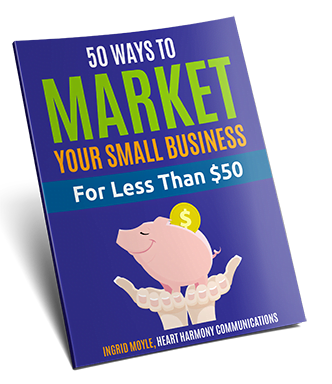When you are too busy to market is precisely the time you NEED to market your business to ensure long term sustainability. Here are simple strategies to help carve out time & get maximum results.
“I am super busy. Every day I mean to get onto getting my website sorted and marketing my business, but I spend each day fighting fires, and it never gets done. How do I find the time to market and still do the work?”
I was having a mentoring session with a brilliant local small business that had started the month before COVID hit.
My client was like many small business owners. They delivered exceptional service every day. Each day was spent serving clients and dealing with a thousand calls on their time.
At the end of each day, they collapsed in a heap exhausted, and all the things that they had wanted to do to grow their business went on the back burner.
As I explained to my mentoring client, this is not a problem if you are happy with the clients you have and the money your business is making.
The problem kicks in if you are a boom/bust business, where you don’t have a consistent supply of clients, so you go from flat to the floor with wall-to-wall clients to nothing in two seconds flat.
You then spiral into desperation marketing where you throw everything everywhere in a scattergun approach, all the while hoping that you get to keep the doors open and that clients will magically appear again.
My client had a different issue: The clients she was getting through your door generally were not the clients she wanted. The clients she was getting were lovely, but they wanted services that her heart wasn’t in or generated low profits for her business.
When you are in that situation, too many of those clients leave you resentful and burned out.
Marketing helps your business get the clients you want when you want them.
One of the most common challenges that small business owners face is finding the time to market their business the right way while still delivering exceptional service to the customers who come through their doors.
If they focus too much on marketing, their service delivery suffers. If they focus too much on service delivery, their marketing suffers, and their funnel of new customers dries up faster than a conversation about toenail fungus.
Small business owners are stuck trying to juggle everything and feel overwhelmed and guilty about not doing it all.
Here are a few tips to help you get off the marketing overwhelm spiral and finally get onto marketing your business, so you get a consistent flow of your ideal clients.

Make an Appointment to Work On Your Business
If you are sick, you make an appointment with your local doctor. If your car needs a service, you make an appointment with your mechanic. Generally, you don’t break these appointments unless something life-shattering happens.
Treat yourself and your business with the same respect and make a weekly appointment in your diary to work on your business and put your marketing into action.
Many years ago, Jo Hassan taught me that by setting time to work ON your business and not IN your business, you step out of fire-fighting mode and into strategic growth-producing mode.
Book time in your diary each week to work ON your business and don’t allow anyone or anything to over-ride this time.
Marketing Pre-thinking
Once you have carved out some time, start with a bit of pre-thinking. There are two things you need to have crystal clear in your mind before you leap into any marketing action.
- Who is my ideal client?
- What worked in the past?
You need to identify what your ideal client looks like and acts like. You need to know what goods or services your ideal client buys from you, and how often. You need to know where your ideal client hangs out and where they get their information from.
The clearer the image you have about your ideal client, the more targeted you will be with your marketing strategies.
For example, suppose you are a hairdresser who specialises in retired women who are active and engaged in society. In that case, there is little point in using photos of 20-year-old women on your website or considering a Tik Tok marketing strategy.
Knowing your ideal client means you can match your marketing tactics to your ideal client, which means you will be more likely to attract them to your business.
There Is No Magic Marketing Bullet
Often, we get caught in the lure that if we just do this “one magic marketing thing” then all our client lead generation issues will be solved. That is like thinking if you just eat one meal at a fancy restaurant that you will never be hungry again.
Life doesn’t work that way and nor does marketing.
We know that some meals will fill us up more than other meals, and some meals are better for us than others.
Marketing is the same.
Marketing is the sum of a stack of tiny actions repeated over and over. Some things fill up our lead generation funnel more than others, and some actions are a bit like junk food: It may taste good at the time but leaves us with potential problems down the track.
When you are super busy, you only want to focus on the actions that deliver the strongest sustainable results and skip the quick and dirty strategies.
How did your ideal client find your business before? Where were the best sources of leads for your ideal clients?
Cast your mind back and identify the action or actions you have done in the past that filled your business up with quality clients (and which were good for your business’s long-term health).
Don’t just think high-level such as “referrals”. Go deeper. Who specifically referred them to you?
If you have several referrers, is there a pattern or trend you can spot? For example, were the best referrers all graphic designers or real estate agents?
Marketing should be all about doing more of what works and doing less of what doesn’t. Knowing what worked before, you are better placed to work out what to do more of now.

Preferred Marketing Channels
Once you know your ideal client and what worked in the past, it is time to work out your preferred marketing channels.
There are hundreds of ways you can market your business. The trick is finding the ones that you like doing and the ones which get the best results.
You don’t have to be a social media tart across every platform to get marketing results. Choose your social media and general marketing strategy based on:
- where your ideal customers are,
- where you are getting results and
- what you like doing.
There’s no point in doing a Facebook marketing strategy if you hate it with a passion, don’t have an account, and prefer to knit instead of hanging out on Facebook.
Here are just a few of the marketing channels you can use to market your business:
- Alliances with aligned businesses to yours
- Networking – Remember, for a sustainable business, you only ever sell THROUGH and not TO your network.
- Social Media (Facebook, Twitter, Instagram, Pinterest, Tik Tok, Google My Business)
- Website & Search Engine Optimisation
- Paid ads (pay-per-click online & print ads)
- Blogging
- Speaking
- Guest authoring/blogging
- Courses, Seminars & Webinars
- Writing a book/eBook
- Newsletters & e-zines
- Email marketing
- Testimonials & word of mouth marketing
- Email templates for regular correspondence with clients
- Live chat & Chatbots
- Podcasting
- Podcast ads
- Videos – Live or Pre-recorded (YouTube and other social media)
- Signage
- Giveaways & Promotions
- Brochures & flyers
- Trade shows
- Radio & cinema ads
- On-hold messages
- Email signatures
- Affiliate marketing
- Sponsorships
Choose Your Channel
Looking at the channel list, it is super easy to hit the overwhelm button, which is why we started our pre-thinking with our ideal client and what worked.
Look at the channel list and only circle the channels you like, which worked for you before and attracted your ideal clients. That should bring the list down to something more manageable.
If you are super busy, then choose no more than your top 3 channels that fall in that sweet spot of what you like and what worked and focus your energy just on them.
Don’t just stick with one channel (no matter how well it has worked for you in the past). Diversify your strategy to protect yourself if one channel suddenly ceases to exist (I am looking at you Google+ and Periscope).
For the next quarter of the year, pick no more than 3 of these sweet spot channels to focus on.
Limit Your Action
Each of the channels you circled has the potential for thousands of tasks. You need to narrow it down to one or two actions that will have the best potential for results.
Don’t get tempted to create a massive, long to-do list. Right now, you want no more than three channels with no more than one action in each channel.
If you could only do one marketing action consistently and reliably well in each of the three channels, what would it be?
At the end of this pre-thinking phase, you should have the following:
My ideal client: Description of who and what they buy.
For the next quarter, I will be doing the following marketing for my business:
- Marketing Channel 1: Action or task
- Marketing Channel 2: Action or task
- Marketing Channel 3: Action or task
To give you an example of what this may look like for my business:
My ideal client is a trade, restaurant or professional service small business owner that lives their brand. Whether they are on their first website or upgrading an existing website, they value WordPress websites that look great, work the way they are supposed to and are easy to update and deliver a compelling customer experience.
For the next quarter, I will be doing the following marketing for my business:
- Social Media – 4 x inspiration and tip posts per week (Goal: Brand awareness and thought leadership).
- Alliances – One coffee catch up a month with a close alliance referral partner. (Goal: Build a deeper connection and learn more about their business).
- Lead Magnet – Complete and launch my 7-Day Challenge Lead Magnet (Goal: Increase newsletter sign-ups).
Plan Ahead
Once you have your ideal client identified and your core actions sorted, you need to work out how to maximise what time you have to get the actions done.
Have you ever found yourself at a loss for what to cook that night for dinner? You drive down to your local supermarket and then aimlessly wander the aisles waiting for inspiration to attack you somewhere near the frozen chips’ aisle.
It happens to all of us now and again. I am not too proud to say my Tardis slippers have periodically seen the inside of our corner supermarket late at night on the quest for dinner inspiration.
However, you also know that you can never just pop in and just buy one or two things at any supermarket. Bread and milk turn into many more (generally un-needed) items, and before you know it, your 5-minute shop has taken an hour, and your wallet is emptier than a school bag rack 15 minutes after the last bell.
By planning, you save time and money by only getting what you need, when you need it, and not getting distracted by bright shiny objects.
In marketing terms, that means looking at your calendar for this week, this month and the next three months and working out what is coming up related to your marketing priorities.
What upcoming networking or other events do you need to prepare for? What big promotional opportunities do you want to take advantage of such as Christmas or summer?
Rather than facing a blank computer screen and waiting for the Marketing Muses to bop you with their copywriting wands, you make everything more efficient and cost-effective by starting with a marketing calendar.
It means you are not annoying your graphic designer with last-minute rush requests (with added premium attached), and you can work with your preferred web designer to plan and deliver your website rather than ringing around to try and find anyone with a pulse who can throw pixels at a page.
Go back to your three priority actions and look at your calendar for the next three months.
Using the social media example, look at what “Celebration Days” are coming up that need to be included in your plan (e.g., Valentine’s Day, International Women’s Day, Harmony Day, Easter etc.).
Prepare in Batches
Remember when your teacher told you to “Do one thing at a time until completion?” (Or maybe that’s just me … my kids tell me that I have this on verbal repeat for them).
If you do one social media post, and then do something else, before you know it will have been weeks between posts and your social media accounts are the home of digital tumbleweeds.
Instead of just doing one post, prepare a batch of them and schedule them out over several days. For example – if you are going to run with #tiptuesday as a hashtag to promote your business, work out four two-sentence tips and then schedule them to run one each Tuesday for a month. Even if you do nothing else that month, at least you will have that bit sorted!
Once you tick off one batch of marketing “somethings,” then start on a different batch. Perhaps do a batch of blog posts or a batch of letterbox drops. Just get that one thing sorted at a time until completion.
Use Templates
If you do something in your business more than once, then you need a template or checklist. That way, you can quickly and consistently repeat the steps you need to follow rather than trying to start from scratch each time.
Whether it is writing business letters, or setting up a new client in your system, templates can save you valuable time and deliver a more consistent customer experience.
For example, many small businesses have the following contacts with clients:
- Request for a quote
- Quote
- Quote acceptance
- Work completed
- Invoice
- Feedback request
Consider how you could make each one of these steps into a template that wow’s your clients rather than is just a transactional process.
Templates can be as simple as writing and creating standard marketing email templates to your clients or as complex as our Australian HR Manual Templates (… and yes I know HR Templates are not strictly marketing – but you are marketing your business to your employees).
You can also create social media post templates using Canva to turbo-boost your social media post development.
Create your template and shave hours off your calendar each month!
Last Thoughts
When you are too busy to market is precisely the time you NEED to market your business to ensure long term sustainability.
By being clear on your ideal client, what worked in the past, and where you want to prioritise your effort, you will be more able to carve out time to work on your business.
Then use planning, batch preparation and careful use of templates to help you make the most of your time.
And what of my mentoring client? She left with a clear picture of her ideal client, an action list of marketing tasks for the coming few months and renewed enthusiasm for her business. She has carved out (and started to use) time in her diary for implementation.
I look forward to cheering on her success!





